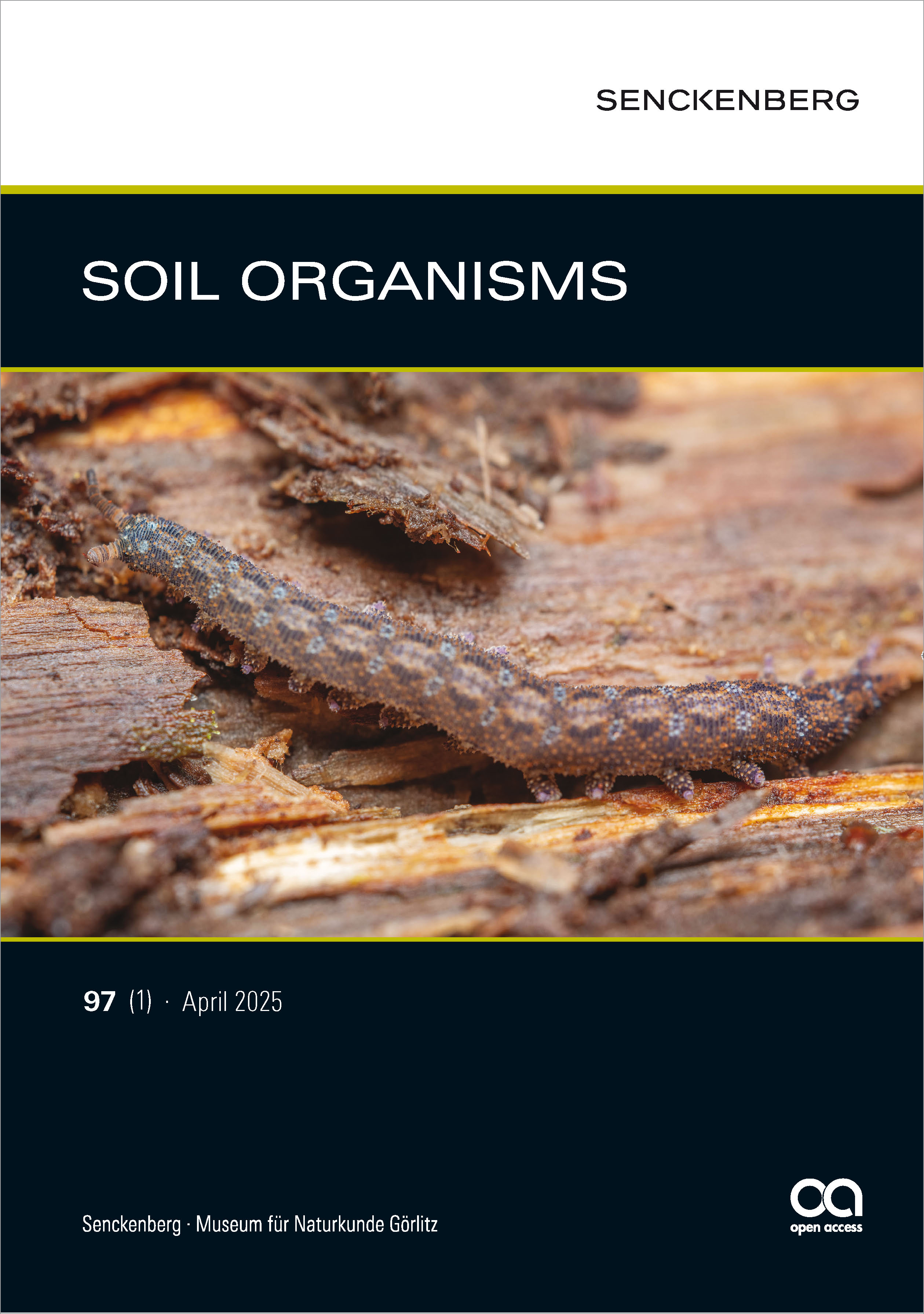The Monomorium carbonarium species group in the Nearctic and Europe (Hymenoptera: Formicidae)
DOI:
https://doi.org/10.25674/441Keywords:
Cryptic species, supercoloniality, invasive species, numeric morphology-based alpha-taxonomyAbstract
A taxonomic revision of the independently living species of the Monomorium carbonarium species group, considering 14 described and two newly described taxa, is provided. Taxonomic decisions were based on Numeric Morphology-Based Alpha-Taxonomy considering 22 morphometric characters in 129 samples with 411 workers and 78 gynes. A diagnosis of the group and a key for the workers of the ten recognized independent species is given. Discrete gyne dimorphism – that is, development of volant winged gynes and wingless gynes – is more widely distributed in the group than previously known. This lead in the past, in connection with insufficiency for species separation in workers, to erroneous description of intraspecific gyne morphs as different species by DuBois (1986). Monomorium minimum (Buckley 1867), M. minimum emersoni Gregg 1945 and M. trageri DuBois 1986 are recognized as junior synonyms of M. carbonarium (Smith 1858) whereas M. wheelerorum DuBois 1986 and M. minimum subsp. cyaneum Wheeler 1914 fall under junior synonymy of M. ergatogyna Wheeler 1904. Monomorium peninsulatum Gregg 1945 is confirmed as junior synonym of M. viridum Brown 1943. Monomorium gallicum n.sp. from W Europe and M. lorenzoi n.sp. from S California are described as new. All species can be clustered in the worker caste by multivariate analyses. Species delimitation of gynes is insufficiently solved due to small sample size, polymorphism and unavailable gynes in two species. Within the eight species confirmed for the New World and having their origin there, only Monomorium carbonarium was introduced to Europe. Three species are found in Europe of which two, M. gallicum n.sp. and M. monomorium, are absent from the Nearctic. Supercoloniality, known from Europe in M. carbonarium and M. gallicum n.sp. and not reported so far from the Nearctic, is supposed to be a new development that took place within the last three decades. Supercolonies of the latter two species were observed in nine local populations introduced to urban environments in France, Germany and the Netherlands.
Downloads
References
Bernard, F. (1968): Les Fourmis d'Europe occidentale et septentrionale. – Faune de l'Europe et du Bassin Méditerranéen 3: 1-411. Masson et Cie, Paris.
Bolton, B. (1987): A review of the Solenopsis genus-group and revision of Afrotropical Monomorium Mayr (Hymenoptera: Formicidae). – Bulletin of the British Museum (Natural History). Entomology 54: 263-452.
Buckley, S.B. (1867): Descriptions of new species of North American Formicidae (continued from page 172). – Proceedings of the Entomological Society of Philadelphia 6: 335-350.
Charrier, N.P., Bonsergent, C., Charrier, M., Malandrin, L., Kaufmann, B. & Gippet, J.M.W. (2020): Invasive in the North: new latitudinal record for Argentine ants in Europe. – Insectes Sociaux 67: 331–335.
Csősz, S. & Fisher, B. L. (2015): Diagnostic survey of Malagasy Nesomyrmex species-groups and revision of hafahafa group species via morphology based cluster delimitation protocol. – ZooKeys 526: 19–59. https://doi.org/10.3897/zookeys.526.6037.
DuBois, M.B. (1986): A revision of the native New World species of the ant genus Monomorium (minimum group) (Hymenoptera: Formicidae). – University of Kansas Science Bulletin 53: 65-119.
Emery, C. (1916): Fauna entomológica italiana. I. Hymenoptera.- Formicidae. – Bullettino della Societa Entomologica Italiana 47: 79-275.
Gomez, K., Espadaler, X., Martínez-Ferrer, M.T. & Campos-Rivela, J.M. (2024): Monomorium monomorium Bolton, 1987 in Spain (Hymenoptera: Formicidae). – Butlletí de la Institució Catalana d’Història Natural, 88 (2): 101-103.
Gregg, R. E. (1945): Two new forms of Monomorium (Formicidae). – Psyche 52: 62-69.
Jerdon, T. C. (1851): A catalogue of the species of ants found in Southern India. – Madras Journal of Literature and Science 17: 103-127.
Seifert, B (2018): The Ants of Central and North Europe. – Lutra Verlags- und Vertriebsgesellschaft, Tauer, 408 pp.
Seifert, B., Ritz, M. & Csösz, S. (2013): Application of Exploratory Data Analyses opens a new perspective in morphology-based alpha-taxonomy of eusocial organisms. – Myrmecological News 19: 1-15.
Smith, M.R. (1936): The ants of Puerto Rico. – Journal of Agriculture of the University of Puerto Rico 20: 819-875.
Wagner, H.C., Seifert, B., Borovsky, R. & Paill, W. (2018): First insight into the ant diversity of the Vjosa valley, Albania (Hymenoptera: Formicidae). – Acta ZooBot Austria 155: 315–321.
Wheeler, W. M. (1904): Ants from Catalina Island, California. – Bulletin of the American Museum of Natural History 20:269-271.
Wheeler WM (1905):The ants of the Bahamas, with a list of the known West Indian species. – Bulletin of the American Museum of Natural History 21: 79-135.
Wheeler, W. M. (1914): Ants collected by W. M. Mann in the state of Hidalgo, Mexico. – Journal of the New York Entomological Society 22:37-61.
Wolcott, G.N. & Martorell. L.F. (1937): The ant, Monomorium carbonarium ebeninum Forel, in a new role: as predator on the egg clusters of Diatraea saccharalis in Puerto Rican cane fields. – Journal of Agriculture of the University of Puerto Rico 21: 577-579.
Downloads
Additional Files
Published
Versions
- 2025-05-02 (2)
- 2025-04-01 (1)
Issue
Section
License
Copyright (c) 2025 Bernhard Seifert

This work is licensed under a Creative Commons Attribution 4.0 International License.
Soil Organisms is committed to fair open access publishing. All articles are available online without publication fees. Articles published from Vol. 96 No. 3 (2024) onwards are licensed under the Creative Commons Attribution 4.0 International (CC BY 4.0) license. Articles published from Vol. 80 No. 1 through Vol. 96 No. 2 are available under the previous terms, allowing non-commercial, private, and scientific use.





